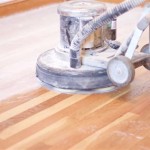Hardwood floor underlayment is an important part of any hardwood floor installation, as it provides a number of benefits that can make a difference in the life of your floor. Underlayment is a thin layer of material that is placed between the subfloor and the hardwood flooring, and it serves a number of functions. In this article, we’ll explore the benefits of hardwood floor underlayment and why it’s important for your floor.
What is Hardwood Floor Underlayment?
Underlayment is a thin layer of material that goes between the subfloor and the hardwood flooring. It is usually made of foam, rubber, or cork and is designed to provide a cushion for the flooring, as well as to absorb sound, protect the flooring from moisture and provide extra insulation. Underlayment also helps to level out small imperfections in the subfloor and can provide additional insulation in cold climates.
Benefits of Hardwood Floor Underlayment
The benefits of hardwood floor underlayment include:
- Sound Insulation: Underlayment helps to reduce noise by absorbing sound and reducing vibrations. This can be especially beneficial in apartments or other shared living spaces.
- Moisture Protection: Underlayment helps to protect hardwood flooring from moisture, which can cause warping and other damage.
- Improved Comfort: Underlayment adds a layer of cushioning between the subfloor and the hardwood flooring, making it more comfortable to walk on.
- Insulation: In cold climates, underlayment can help to keep the floor warm and reduce energy costs.
- Leveling: Underlayment can help to level out small imperfections in the subfloor, making it easier to install the hardwood flooring.
Types of Hardwood Floor Underlayment
There are several types of hardwood floor underlayment available, including foam, rubber, and cork. Each type has its own benefits and drawbacks, and you should choose the type that best meets your needs. Foam underlayment is often the most affordable option, while rubber and cork are more expensive but provide better sound insulation and moisture protection.
Installation Tips
When installing hardwood floor underlayment, it’s important to make sure that it is installed correctly. Most types of underlayment require that you use a vapor barrier to protect the flooring from moisture, and you should also make sure that the underlayment is properly sealed to prevent any air leaks. Additionally, you should make sure that the underlayment is laid properly, with no gaps or overlaps.
Conclusion
Hardwood floor underlayment provides a number of benefits that can help to extend the life of your floor. It helps to reduce noise, protect the floor from moisture, and provide additional insulation. There are several types of underlayment available, so be sure to choose the type that best meets your needs. Lastly, make sure that the underlayment is installed correctly to get the most out of it.



:max_bytes(150000):strip_icc()/hardwood--oak--floor-172261142-5a382e14ec2f640037fe9f90.jpg)











Related Posts








